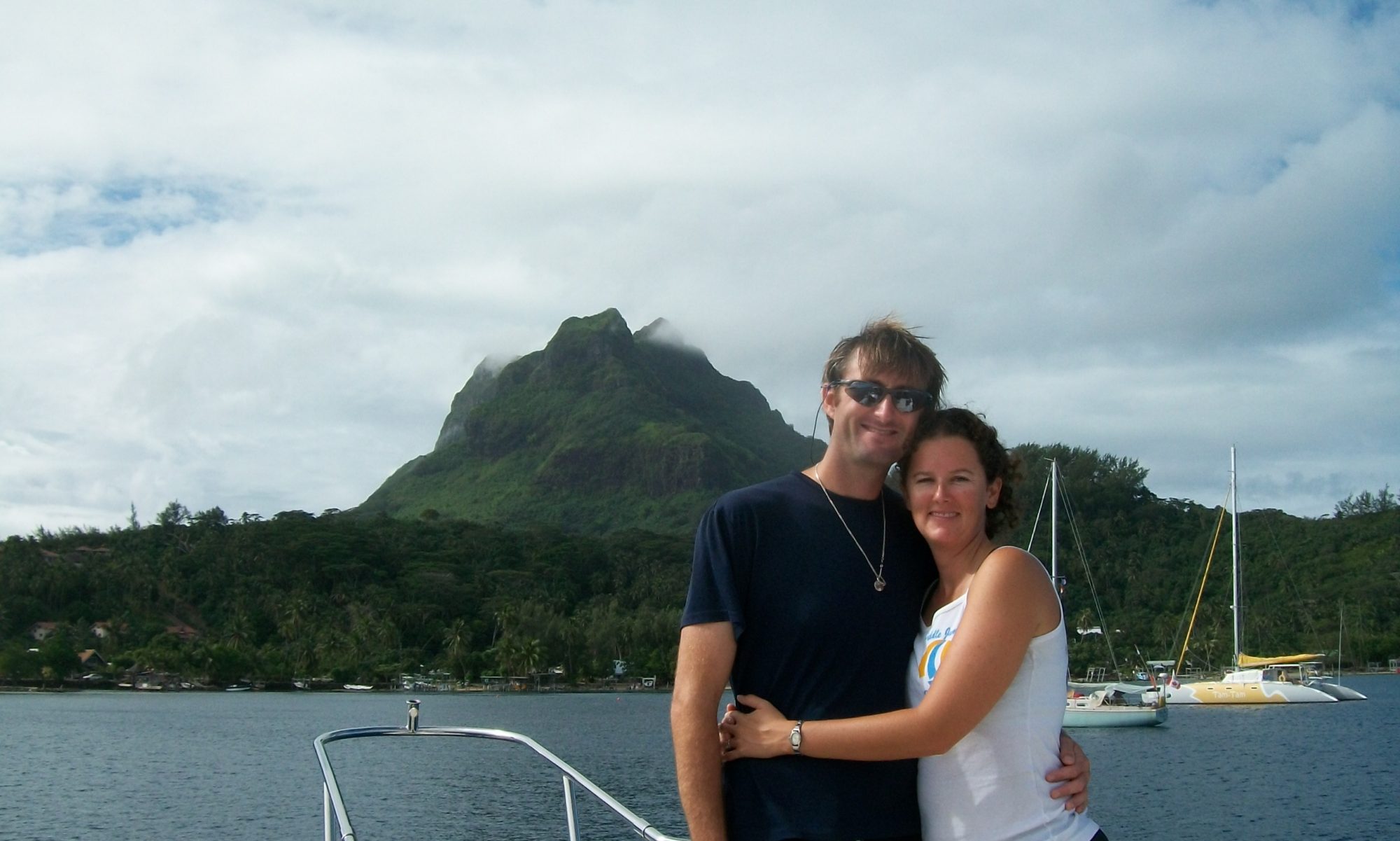Kauehi, Tuamotu, French Polynesia
The transit from the Marquesas to the Tuamotu was fairly uneventful. Being the ocean crossing salty dogz (yes, with a “z”) that we are, we scoffed at the idea of a 3 day sail to the next island chain as if such paltry transiting now barely even merited our attention. I mean, goodness we scarcely had to provision for this trip. OK, we bought some extra baguettes and some pamplemousse but that’s basically about it.
Have I mentioned pamplemousse yet? Picture grapefruit…ok now picture it actually tasting really, really good. I mean crazy good. Like you could easily eat yourself sick on it. Yeah, that’s pamplemousse. They grow it out here. It’s better than the mangoes. Notice you don’t see any pamplemousse rotting on the ground with the mangoes…there’s a reason for that.
(From our friends on SV Mulan)
The sail across did have one interesting highlight though:
Yes, a spider crawled out of my armpit. Well, fell out really. I screamed, it died. I screamed some more. I’d rather not dwell on the experience.
The Tuamotus are in and of themselves, an interesting story. Imagine, if you would, hundreds of square miles of open ocean a few miles deep. Ok, now in the middle of that, stick a ring of islands that reach no higher than 3-10 feet above sea level. It’s kind of like the Florida keys, minus the mainland nearby. Oh, and the big lagoon in the center of each…
People live on these things. Which is amazing, but where do the islands come from? Well, Darwin (yes, THAT Darwin) apparently had a second theory that drew a little less fire from the Christian coalition than his evolutionary ponderings. Darwin’s Theory of Atoll Formation states:
(from www.geocaching.com)
Stage 1: islands form from either exploding volcanoes or by the earth’s crust jutting up (like mountains) (the Marquesas are an example of stage 1)
Stage 2: coral, which is apparently just floating around the ocean looking for a place to live, latch onto these islands. There they are supplied with a place to live that is close enough to the surface to allow for sunlight. Coral grows around the islands and form a barrier reef.
Also during this stage the volcano goes dormant and the island starts to sink back into the ocean. Basically, the combined weight of the large mountain jutting literally miles up from the surface of the sea floor is a bit much for the crust to take, so it sinks. Also erosion starts to take affect. The coral keeps growing though, so the difference between the receding island shoreline and the barrier reef becomes a protected lagoon. (The Society Islands are an example of stage 2)
Stage 3: The island sinks below sea level, leaving a lagoon anywhere from 0 to 100 feet deep. The coral keeps growing and forms tiny islands (or “motu” in Tahitian) made completely from the coral. The motu grow on top of the barrier reef which is also constantly growing, so it does not sink despite the sinking of the island. In the end the barrier reef islands are all that remain.
The islands we have just entered are examples of this final stage.
Now while that is all very well and good, lets move on the practical application portion of our little science lesson here: sailing THROUGH a coral reef in order to effectively get swallowed up by an island where you sail on an underground mountain that juts up at unidentified locations just below the water line is, shall we say, a source of some concern for the average yacht owner. Especially when the nearest repair facility is oh, say, 700 miles away, give or take.
Well, here we go…
~Greg






4 Replies to “Prepare for Penetration”
Comments are closed.